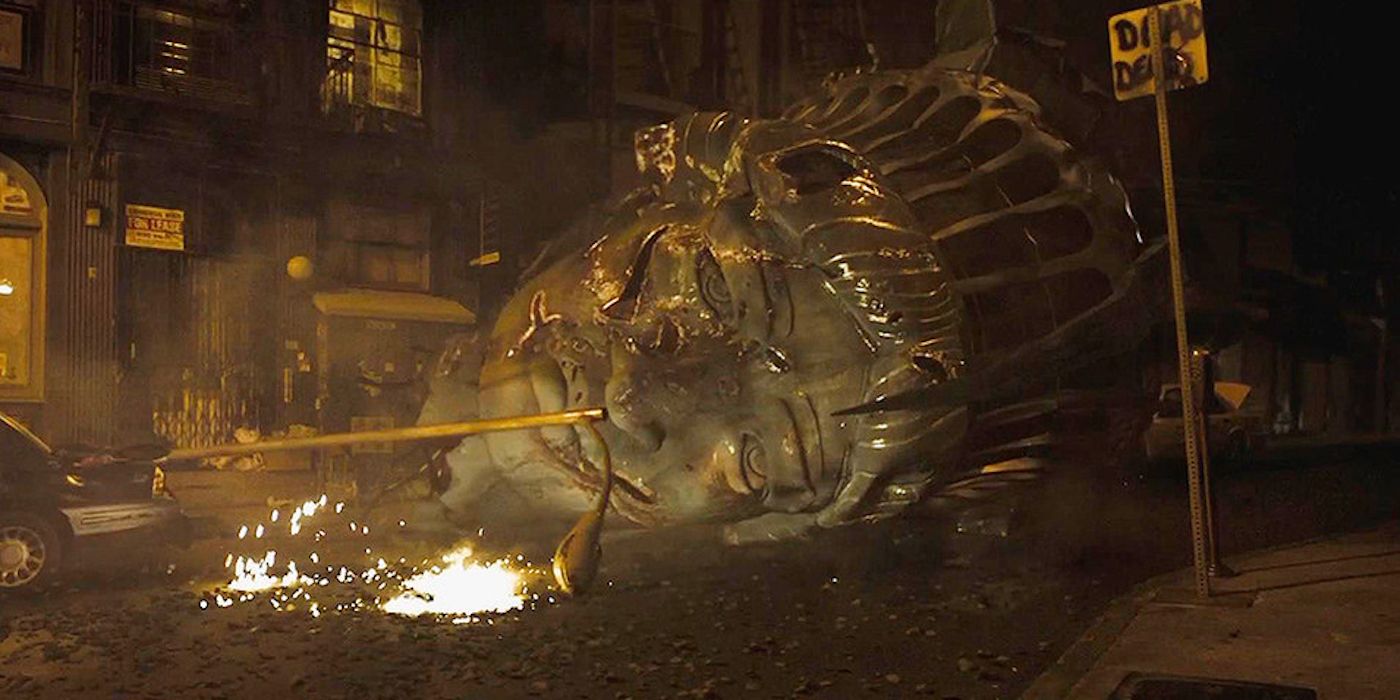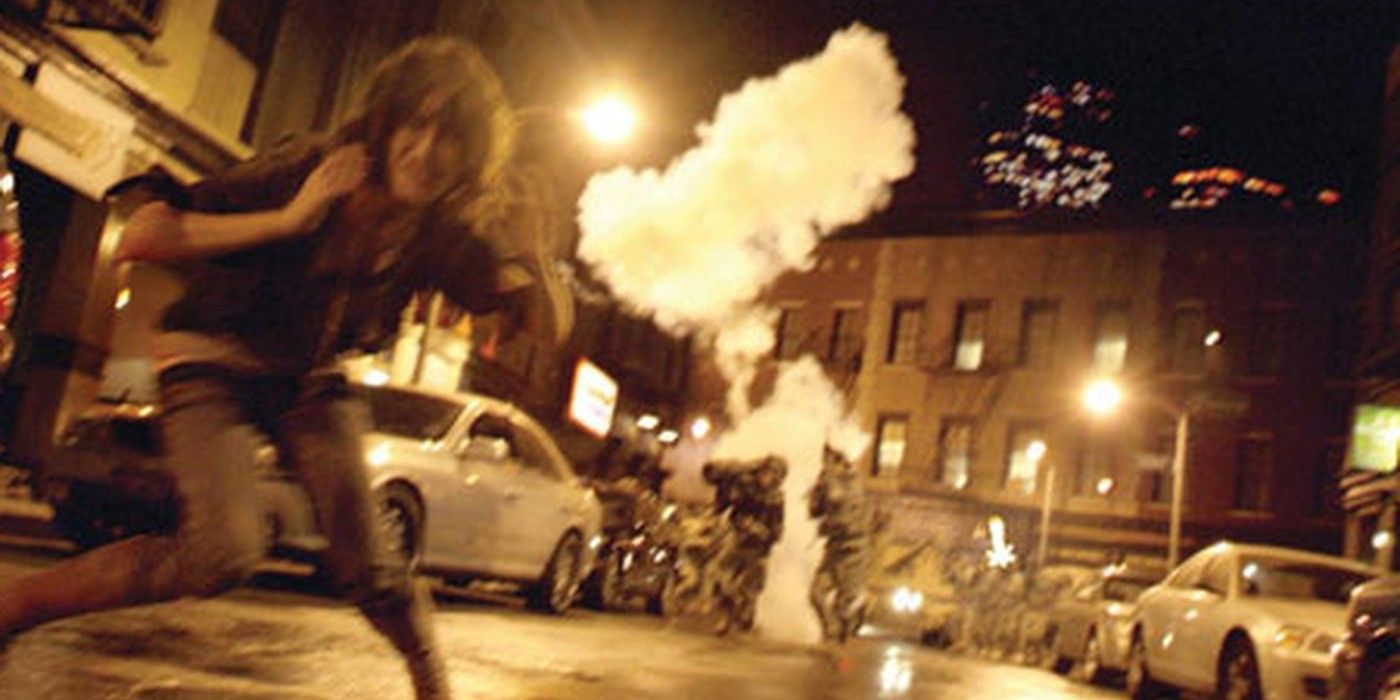Cloverfield's shaky-cam style of filming is one of its most iconic elements, but it also made a surprising number of audience members experience motion sickness. This phenomenon became so prominent that many theaters had to post warnings that the new horror movie may induce nausea. However, the reason behind the so-called Cloverfield illness is surprisingly simple, according to science.
Cloverfield follows a group of New Yorkers at a going-away party to send off a friend to a new job overseas. One friend named Hud (T.J. Miller) films the party on his personal camera to commemorate the occasion. But when a mysterious monster emerges from the sea and begins to wreak havoc on the city, Hud doesn't stop filming. he captures every moment as he runs, ducks, and has frantic conversations with his friends. He even manages to hold onto the camera when the monster snatches Hud up and kills him.
While the shaky cam added a level of authenticity to the found footage horror movie. But the frantic motion of the camera caused in some what came to be known as the "Cloverfield illness." It's because that style of shooting actually sends very mixed signals to one's brain.
According to WebMD, motion sickness is caused by the brain receiving conflicting messages from parts of the body such as the inner ear and the eyes. That motion sickness can lead to symptoms such as nausea, vomiting, headache, and sweating. When watching Cloverfield, people were obviously sitting stationary in a movie theater — the inner ear communicates that to the brain. The shaky camera motions visually communicated that audience members were being moved around erratically. For those prone to motion sickness, this phenomenon caused a big problem. Many people who experienced the "Cloverfield illness" felt so sick that they had to leave the theater.
Cinematic motion sickness isn't unique to the J.J. Abrams movie. Audience members have reported similar symptoms for other found footage movies. But as Cloverfield revitalized the genre for a new generation, it was an unprecedented phenomenon for many. It's an unfortunate side-effect, as the movie's camerawork is vital to the film's frenzied storyline. Some have even run Cloverfield scenes through a stabilizing filter (via Youtube), but it completely takes away from the movie's constant tension. The fact of the matter is, some viewers will just always have to avoid watching Cloverfield. As found footage horror movies are still thriving, future movies in the genre can continue to heed the lesson from Cloverfield — too much shaky cam and a filmmaker risks driving the audience out of the theater. Striking the right balance can still completely immerse the audience into the story without making them feel sick.


